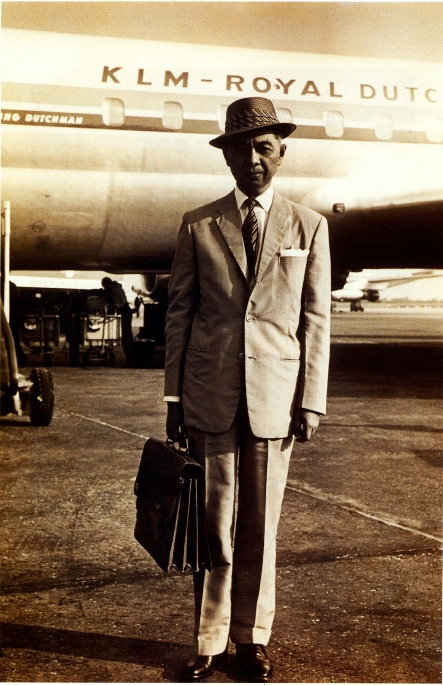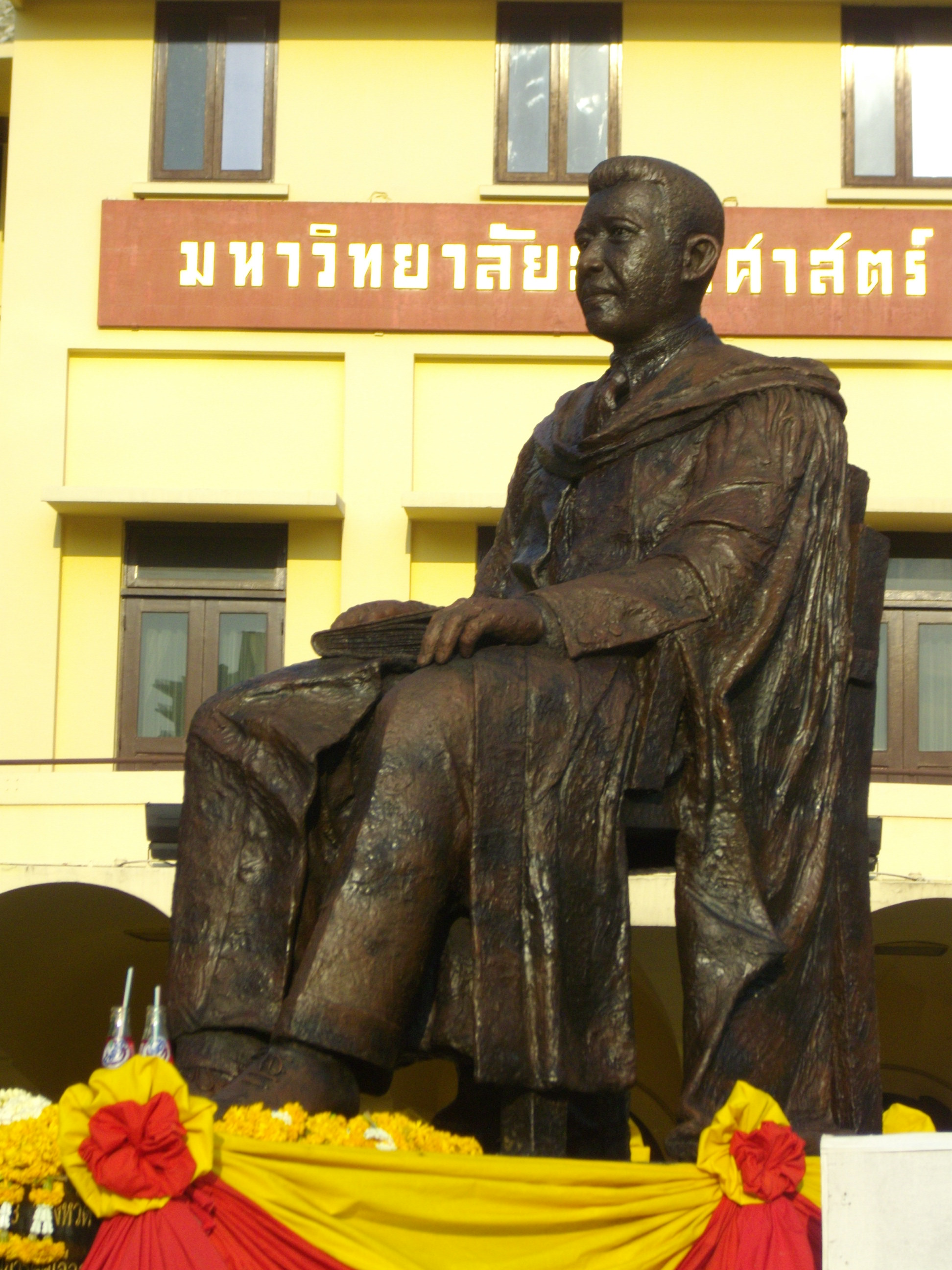|
Three Seals Law
The ''Three Seals Law'' or ''Three Seals Code'' ( th, กฎหมายตราสามดวง; ) is a collection of law texts compiled in 1805 on the orders of King Rama I of Siam. Most of the texts were laws from the Ayutthaya era which had survived the destruction of Ayutthaya in 1767. The compilation remained the working law of Siam until partially replaced by modern law codes in the early 20th century. The texts are an important source for the history of the Ayutthaya Kingdom and legal history in Asia. Parts of the ''Three Seals Law'' are still in force, according to a ruling of the Supreme Court of Justice of Thailand in 1978. Prachumyat 2013, pp. 63–64 Background King Rama I paid attention to the preservation of Thai texts that had survived the destruction of Ayutthaya in 1767, including the royal chronicles and religious texts. Shortly after completing a revision of the Tipiṭaka, the Buddhist canonical scriptures, in 1804, he turned his attention to the laws. Af ... [...More Info...] [...Related Items...] OR: [Wikipedia] [Google] [Baidu] |
Phrakhlang
Chatusadom or Catustambha ( th, จตุสดมภ์ , literally "Four Pillars" from Sanskrit ''Catur'' "Four" + ''Stambha'' "Pillars") was the Thai system of central executive governance during the Ayutthaya Kingdom, Thonburi Kingdom and Rattanakosin Kingdom from 1454 to 1892. For about four hundred years, it had served as the constitution of central government of Siam or Thailand until King Chulalongkorn organized ''Chatusadom'' into modern ministries and officially established the Cabinet on April 1, 1892. The ''Chatusadom'' system King Trailokanat promulgated the constitution of ''Chatusadom'' in his Palatine Law, or ''Phra aiyakan tamnaeng na phonlaruean'' ( th, พระไอยการตำแหน่งนาพลเรือน), with the promulgation date being 1454. The original written law had been lost, however. ''Chatusadom'' went through subsequent amendments over time and King Rama I enacted the Palatine Law in the Three Seals Law, from which the ''Chatusa ... [...More Info...] [...Related Items...] OR: [Wikipedia] [Google] [Baidu] |
Chulachomklao Royal Military Academy
Chulachomklao Royal Military Academy (CRMA) ( th, โรงเรียนนายร้อยพระจุลจอมเกล้า, translit=Roong riian naai rɔ́ɔi prá Jù-lá-jɔɔm-glâo or รร.จปร.) is the service academy of Royal Thai Army (RTA). Established in 1887 it has graduated the majority of Thailand's military leaders, many of whom have become Thai prime ministers. The academy has an intense training program. There are about 200 cadets in each class. History CRMA was founded on 5 August 1887 by King Chulachomklao, King Rama V, also known as King Chulalongkorn. It was originally called the Royal Military Academy. On 1 January 1948, it was merged with the Royal Thai Army Polytechniques Institute, under the new name Chulachomklao Royal Military Academy in the honor of King Chulachomklao. Chulachomklao Royal Military Academy was originally in the precinct of Saranrom Palace in Bangkok, where it remained for 77 years. In 1909 the academy was moved t ... [...More Info...] [...Related Items...] OR: [Wikipedia] [Google] [Baidu] |
Kyoto University
, mottoeng = Freedom of academic culture , established = , type = National university, Public (National) , endowment = ¥ 316 billion (2.4 1000000000 (number), billion USD) , faculty = 3,480 (Teaching Staff) , administrative_staff = 3,978 (Total Staff) , students = 22,615 , president = Nagahiro Minato , city = Kyoto , state = Kyoto Prefecture, Kyoto , country = Japan , coor = , undergrad = 13,038 , postgrad = 9,308 , campus = Urban area, Urban,, , colors = Dark blue (color), Dark blue , nickname = Kyodai , mascot = None , free_label = Athletics , free = 48 varsity teams , affiliations = Kansai Big Six, Association of Southeast Asian Institutions of Higher Learning, ASAIHL , logo = , website www.kyoto-u.ac.jp , or , is a public university, public research university located in Kyoto, Japan. Founded in 1897, it is one of the former Imperial Universities and the second oldest university in Japan. KyotoU is consistent ... [...More Info...] [...Related Items...] OR: [Wikipedia] [Google] [Baidu] |
Yoneo Ishii
was a Japanese historian who specialized in the study of Thailand. Biography Ishii was born in Tokyo, Japan. After excepting a recommendation by his teacher in learning a Thai language, he went to Thailand. There, he was enrolled into the Chulalongkorn University and joined Ministry of Foreign Affairs shortly after. In 1958, due to his knowledge in history and religion of the region, he spent three months as a Buddhist priest at the Wat Bowonniwet temple in Bangkok. Later on, as a professor he joined Japanese Society of Ethnology and Osaka City University. From there, he traveled to such countries as Cambodia, Laos, Thailand and Vietnam in each one of which he studied cultures of those nations. He completed his studies there as well, and got hired at the Japanese embassy in Bangkok where he worked for seven years. In 1963 he returned to his native land to continue his work at the Ministry of Foreign Affairs and two years later got hired by the Center for Southeast Asian Studie ... [...More Info...] [...Related Items...] OR: [Wikipedia] [Google] [Baidu] |
Seni Pramoj
Mom Rajawongse Seni Pramoj ( th, หม่อมราชวงศ์เสนีย์ ปราโมช, , ; 26 May 190528 July 1997) was three times the Prime Minister of Thailand, a politician in the Democrat Party, lawyer, diplomat and professor. A descendant of the Thai royal family, he was the great-grandson of King Rama II. His final two terms as PM sandwiched the only term of his brother, Kukrit Pramoj. Biography Born a son of Prince Khamrob and mother Daeng ( Bunnag), he was educated at Trent College in Derbyshire before obtaining a BA second class honours degree in jurisprudence from Worcester College, Oxford. He continued his studies at Gray's Inn, London, receiving first honours. After returning to Thailand he studied Thai Law, and following six months as a trainee at the Supreme Court, he started to work at the Justice Civil Court. Later, he was transferred to the Foreign Ministry and in 1940 was sent to the United States as Thai ambassador. Free Thai Movement J ... [...More Info...] [...Related Items...] OR: [Wikipedia] [Google] [Baidu] |
Thammasat University
Thammasat University (Abbreviation, Abrv: TU th, มธ.; th, มหาวิทยาลัยธรรมศาสตร์, , ) is a public research university in Thailand with campuses in Tha Phra Chan area of Phra Nakhon District near the Grand Palace in the heart of Bangkok; in Rangsit, 42 kilometers north of Bangkok; in Pattaya, a resort city on the eastern seaboard of Thailand; and in Lampang Province. , Thammasat University has over 33,000 students enrolled in 33 faculties, colleges, and institutes and 2,700 academic staff. Thammasat is Thailand's second oldest List of universities and colleges in Thailand, university. Officially established to be the national university of Thailand on 27 June 1934, it was named by its founder, Pridi Banomyong, the University of Moral and Political Sciences ( th, มหาวิทยาลัยวิชาธรรมศาสตร์และการเมือง; ). It began as an Open-door academic policy, open university, wi ... [...More Info...] [...Related Items...] OR: [Wikipedia] [Google] [Baidu] |
Robert Lingat
Robert Lingat (Rō̜ Lǣngkā, th, โรแบร์ แลงกาต์, 1892 – 1972), was a French-born academic and legal scholar most known for his masterwork on the practice of classical Hindu Law. He died May 7, 1972, one year before the first English translation of his work established it as the single most authoritative text on the concept of dharma in Indian legal history. This followed three decades after his three-volume Thai-language edition of Siamese laws (1939-1940) earned him recognition from renowned legal scholar John Henry Wigmore as "the greatest (and almost the only) authority on Siamese legal history," adding: "It will be a notable day when the learned editor will produce for us (as surely he is destined to do) a translation in French." Life Lingat was born in Charleville in 1892, and though not much is known of his personal life, it is established that he received his doctorate in Law in Paris in 1919. He moved to work in Bangkok as a legal advi ... [...More Info...] [...Related Items...] OR: [Wikipedia] [Google] [Baidu] |
Mongkut
Mongkut ( th, มงกุฏ; 18 October 18041 October 1868) was the fourth monarch of Siam (Thailand) under the House of Chakri, titled Rama IV. He ruled from 1851 to 1868. His full title in Thai was ''Phra Bat Somdet Phra Menthora Ramathibodi Sri Sinthara Mahamakut Phra Mongkut Phra Siam Deva Mahamakut Wittaya Maharaj'' (พระบาทสมเด็จพระปรเมนทรรามาธิบดีศรีสินทรมหามงกุฎ พระจอมเกล้าเจ้าอยู่หัว พระสยามเทวมหามกุฏวิทยมหาราช). Outside Thailand, Mongkut is best known as the king in the 1951 musical and 1956 film ''The King and I'', based on the 1946 film '' Anna and the King of Siam''in turn based on a 1944 novel by an American author about Anna Leonowens' years at his court, from 1862 to 1867, drawn from Leonowens’ memoir. Siam first felt the pressure of Western expansionism during Mongku ... [...More Info...] [...Related Items...] OR: [Wikipedia] [Google] [Baidu] |
National Library Of Thailand
The National Library of Thailand ( th, หอสมุดแห่งชาติ) is the legal depositary and copyright library for Thailand. It was officially established on 12 October 1905, after the merger of the three existing royal libraries, and is one of the oldest national libraries in Asia. It operates under the jurisdiction of the Fine Arts Department of the Ministry of Culture in Bangkok, Thailand. , the library in Bangkok housed over three million items and had 11 provincial branches. Its budget was 87 million baht and it employed about 200 staff. Background The National Library of Thailand's main tasks are collecting, storing, preserving, and organizing all national intellectual property regardless of medium. Collections include Thai manuscripts, stone inscriptions, palm leaves, Thai traditional books, and printed publications as well as audio-visual materials and digital resources. The library is a national information resource serving citizens nationwide. T ... [...More Info...] [...Related Items...] OR: [Wikipedia] [Google] [Baidu] |
Rama III
Nangklao ( th, พระบาทสมเด็จพระนั่งเกล้าเจ้าอยู่หัว, ; 31 March 1788 – 2 April 1851), birth name Thap ( th, ทับ), also styled Rama III, was the third king of Siam under the House of Chakri, ruling from 21 July 1824 to 2 April 1851. Nangklao was the eldest surviving son of his predecessor, king Rama II. His mother Sri Sulalai was one of the king's secondary wives. Nangklao was likely designated as heir by his father, his accession was uncontested and smoothly confirmed by the grand council. Foreign observers, however, falsely perceived him as having usurped the prior claim of his half-brother Prince Mongkut, who was younger, but born to queen Sri Suriyendra and thus " legitimate" according to Western customs. Under the old concept of Thai monarchy, however, a proper king must emulate Maha Sammata in that he must be "elected by the people." Ironically, Prince Mongkut may have later contributed to thi ... [...More Info...] [...Related Items...] OR: [Wikipedia] [Google] [Baidu] |
Dan Beach Bradley
Dan Beach Bradley (18 July 1804 – 23 June 1873) was an American Protestant missionary to Siam from 1835 until his death. He is credited with numerous firsts, including, bringing the first Thai-script printing press to Siam, publishing the first Thai newspaper and monolingual Thai dictionary, performing the first surgery in Siam, and introducing Western medicine and technology. Early life Dan Beach Bradley was born on 18 July 1804 in Marcellus, New York. He was the son of Judge and Pastor Dan Bradley of Whitehall, New York, and Eunice Beach. Eunice died soon after giving birth to her son. As a child, Dan Beach Bradley was an astounding scholar and he loved to read. When Bradley was 20 years old, he suffered a week of deafness and it caused him to examine his spiritual life. Two years after this incident, Bradley dedicated his life to serve Jesus Christ. Bradley thought that his age was not appropriate to study for the ministry so he began studying medicine in the office of a ... [...More Info...] [...Related Items...] OR: [Wikipedia] [Google] [Baidu] |





.jpg)

.jpg)